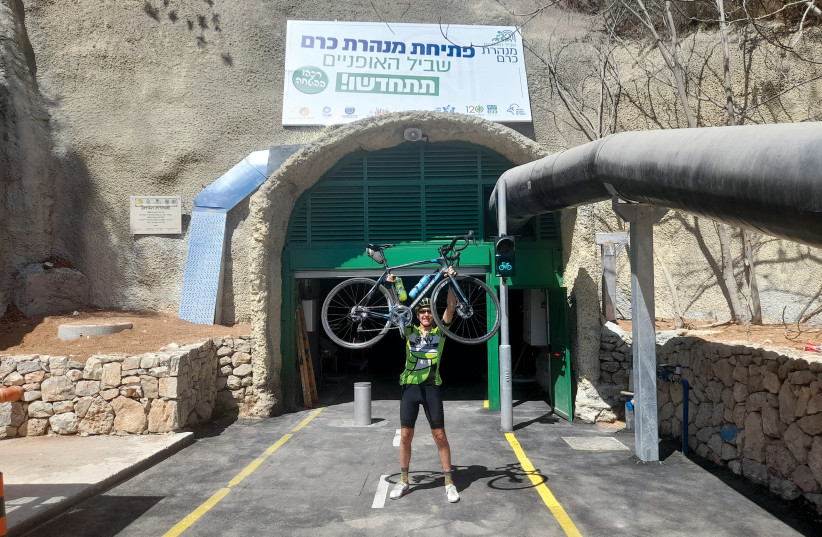When we talk about bike lanes (note, not bike paths), we are talking about engineering planning of lane width, the distance between light poles, the thickness of substrate layers, color and traffic arrangements.
But, by nature, everything has a logical order. Engineering is a means of solving problems or aesthetics of the human race and has always been here. For example, the pyramids in Egypt are an engineering marvel that was designed and there are several hypotheses as to how they were built.
One of them says that by means of logs that were rolled on a pile of sand, the other approach says that it is a diversion of the Nile and the other says that, in general, it is the assistance of aliens as in the book Chariots of the Gods.
What is certain is that engineering is a means and not an end. When considering bike lanes, remember that they are supposed to serve the person riding. Therefore, apart from technical engineering and human engineering, one must think about the benefits that the bicycle paths will bring to the user and start from there.
There are many things that cannot be done from the car seat but can be done from the bicycle seat. For example, the ability to stop near a bench and rest under a tree or stop and chat with a seller in a store or a person we met on the street.

Riding bikes helps you explore the city in a different way
When you ride a bike, you discover the geography of the city in a different way than you can from the seat of the car. When I went to Paris in the summer with my son, I met a fire crew on a morning run. At first, I didn’t recognize that they were firefighters.
Only after I noticed the walkie-talkies held by the last and first runner did I connect the two fire engines accompanying the team. I picked up speed and looked for the crew chief. We started talking and he told me that this is a 15 km. morning run that the team goes out every morning. Later, he explained to me that in addition to keeping fit, the firefighters get to know the city streets with their feet.
After we parted, I thought all the way to the hotel about this sentence: “The team gets to know the streets of the city with their feet.” I suddenly realized that there are things that you simply don’t notice when you see from the map or from the car seat. It just connected to bike lanes for me. There are actions that we cannot do from a car seat but we can do from the bicycle seat, such as getting to know the geography of city streets.
ANOTHER LAYER is related to the fact that humans are first of all social creatures and cycling allows you to create social relationships with people, and create meetings and opportunities to meet people and still move between destinations.
Another aspect is health. Riding is a sport, even if we ride not for sport, we are in motion. In Arabic, there is a saying: in movement, there is a blessing. Cycling improves our health due to the movement we perform, which reduces disease and improves disease prevention.
Another aspect is mental health. The combination of social connections and sports is a winning combination that reduces depression, increases good mood and is also a prevention of mental and physical health problems. All these belong to the discipline of sociology and medicine.
In Israel today, the existing perspective is engineering first. That is why you can find many bicycle paths, which are still erroneously called bicycle paths, that are not used.
Yet, when the aspects above are placed first before the engineering, the planning will be biased towards the person who uses the bicycle lanes. In such a way, the sociological and health aspects will be served through engineering planning, which will be a means alone. By the way, when measuring the number of trips in the context of cycling in the urban area, they are around 3 km.
Now ask yourself, does the bike path near your house serve sociological and health aspects or engineering aspects? How you will know is very simple: Ask yourself, would use these bike lanes even if you had an old bike you could ride and you wouldn’t need expensive equipment? In addition, ask yourself do the bicycle lanes really reach every point in your neighborhood quickly and give you engineering solutions for weak points on which the bicycle lanes are paved, such as a meeting point with pedestrians or a private vehicle, like a crosswalk or stairs leading from a school to a sidewalk?
If the answers are “Yes”, it’s worth getting out of the car and leaving the car in the parking lot because the person who designed the bike lanes in your city really thought of you because he understands that engineering is a means and not an end. They really thought about the end users who ride bicycles and biased planning was carried out in their favor.
Engineering serves sociology in such a way that in the planning process the people using the bicycle lanes, meaning you, are most important. You have chosen a great city to live in Israel. Have a nice ride.
The writer is a cycling lanes expert, a traffic consultant for cities and a sociologist with a Master’s Degree.
